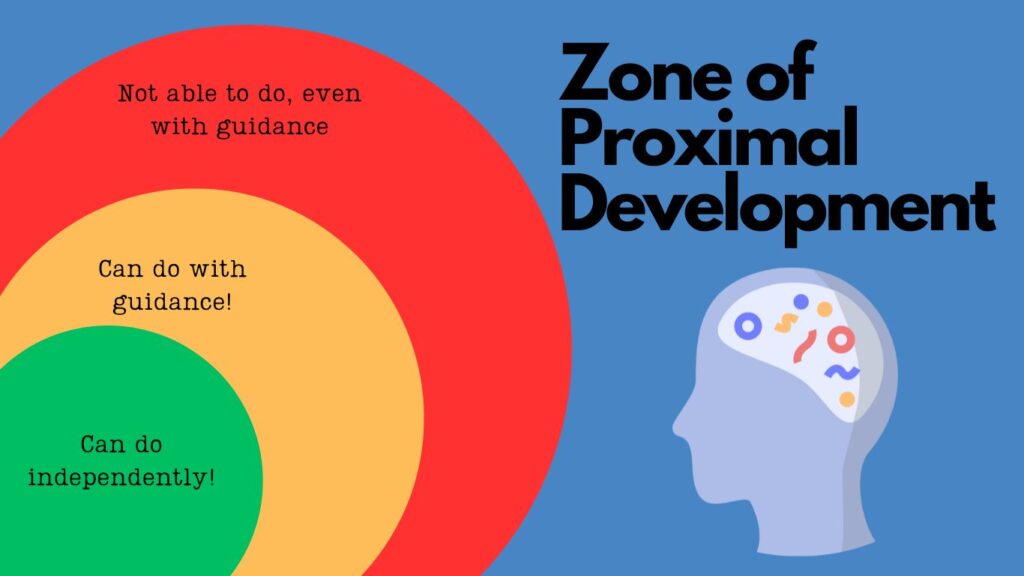What is the Zone of Proximal Development (ZPD)?
The zone of proximal development refers to the range of tasks or skills that a person can perform with the assistance or guidance of a more knowledgeable individual. This “zone” is where learning and growth occurs.
- The gap between a person’s current level of ability and their potential level of ability with support.
- The zone of proximal development is a concept developed by psychologist Lev Vygotsky to explain how learning and development.
- It emphasizes the importance of scaffolding and providing appropriate challenges to help individuals progress and reach their full potential.
- The zone of proximal development varies for each individual and can change over time as skills and knowledge are acquired.
How can understanding the zone of proximal development help both in academic and professional settings
Academic Settings:
- Tailored Instruction: Educators can design lessons that are neither too easy nor too challenging, ensuring students are engaged and challenged appropriately.
- Effective Group Work: By pairing students who have mastered certain skills.
- Diagnostic Tool: Helps educators identify the specific areas where a student needs guidance or scaffolding.
- Progress Monitoring: Allows educators to track student progress and adjust instruction based on where the student is within the ZPD.
- Motivation Boost: When students work within their ZPD, they experience a balance of challenge and attainability.
Professional Settings:
- Skill Development: Managers can identify the gap between an employee’s current skills and the next level, providing targeted training within the ZPD.
- Mentorship Programs: Pairing less experienced employees with seasoned professionals can facilitate learning within the ZPD.
- Performance Reviews: The ZPD can inform areas for growth, helping employees focus on specific skills or knowledge areas.
- Team Collaboration: Understanding team members’ ZPDs can lead to more effective delegation, ensuring tasks are assigned based on individual growth areas.
- Employee Engagement: Employees are more engaged when they are challenged (but not overwhelmed), which the ZPD framework can help achieve.
- Onboarding: For new hires, understanding their ZPD can help in designing training programs that are tailored to their current skills and potential growth areas.
In essence, the Zone of Proximal Development provides a framework to understand the sweet spot between challenge and capability.




